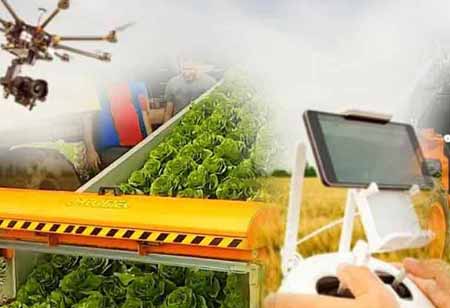Thank you for Subscribing to Agri Business Review Weekly Brief
Why Should Farmers Consider Controlled Environment Agriculture?
Indoor cultivation of plants through Controlled Environment Agriculture (CEA) offers a tailored approach to mimic outdoor conditions

By
Agri Business Review | Thursday, April 11, 2024
Stay ahead of the industry with exclusive feature stories on the top companies, expert insights and the latest news delivered straight to your inbox. Subscribe today.
Compared to traditional outdoor farming, CEA presents numerous advantages, primarily the ability to meticulously manage optimal growth conditions throughout a crop's development. Traditional farming faces challenges like limited land availability, water scarcity, unpredictable weather patterns, heightened pest issues due to climate change, and inefficiency in accommodating larger populations.
FREMONT, CA: Indoor cultivation of plants through Controlled Environment Agriculture (CEA) offers a tailored approach to mimic outdoor conditions while optimizing growth factors like artificial sunlight, atmospheric gases, water, and more. This method is gaining momentum due to its ability to ensure year-round production and immediate access to fresh produce, alongside increased profitability.
Compared to traditional outdoor farming, CEA presents numerous advantages, primarily the ability to meticulously manage optimal growth conditions throughout a crop's development. Traditional farming faces challenges like limited land availability, water scarcity, unpredictable weather patterns, heightened pest issues due to climate change, and inefficiency in accommodating larger populations.
Despite technological advancements in agriculture, including novel agrichemicals to reduce reliance on pesticides and fertilizers, by 2050, the global population is expected to increase by 2 billion. This necessitates alternative strategies such as vertical farming, which maximizes space and resources by stacking plant-holding structures indoors. Crucial variables affecting plant development include pH, humidity, and CO2 concentration, but temperature and light remain paramount. Overcoming the challenge of providing adequate light to enclosed plants, CEA technology brings artificial sunlight indoors through lamps.
Moreover, CEA farming fosters sustainability by enabling local production in urban areas, resulting in lower carbon footprints compared to externally-produced crops, once transportation costs are factored in.
Retail lamps, commonly marketed for human comfort in interior spaces, also play a role in indoor plant cultivation. While their specifications often focus on creating a desirable ambiance for humans, they inadvertently impact plant growth. Technical details provided for retail lamps emphasize parameters related to human perception rather than plant requirements. These include:
Lighting lumens: Reflecting the amount of light emitted by a source, lumens (lm) measure brightness. Lower lumens denote dimmer light. This photometric unit gauges the perceived brightness of a source, rather than its absolute optical power.
Color temperature: Expressed in Kelvin (K), color temperature signifies the warmth or coolness of light. Ranging from 2,700 to 3,000 K for warm tones and above 5,000 K for cool tones, it's known as correlated color temperature. This value corresponds to the blackbody temperature a light would have if it were an illuminating star.
As the global population continues to expand, alternative approaches like CEA will become increasingly vital for sustaining food production. Integrating technological advancements, such as retail lamps optimized for both human comfort and plant growth, presents an opportunity to further enhance indoor cultivation practices.





